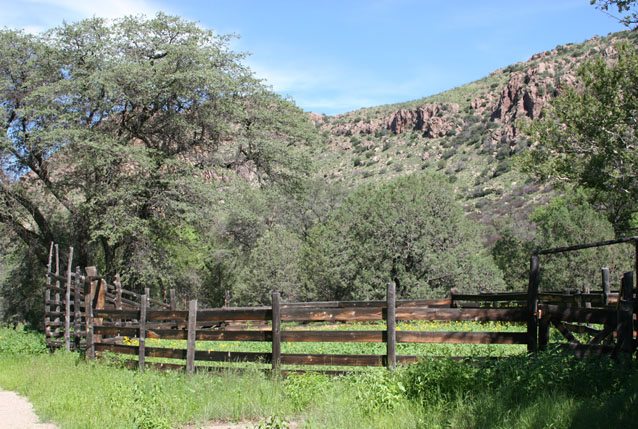Historians often have depicted the tourism industry in the West as superseding productive relationships with the land. As the economy changed in the twentieth century, many communities that had started off in the mining, logging, or ranching industry looked to tourism as a way to survive. The Faraway Ranch complicates notions of the relationship between tourism and the environment.
Even as the ranch became a guest facility, the Riggses never abandoned their productive relationship with the land. They continued to run cattle, irrigate fields, and raise fruits and vegetables. Indeed, these activities were central to the guest ranch. Visitors enjoyed watching the livestock, and Lillian incorporated the fruits and vegetables they produced into the daily menu. Faraway Ranch operated on a mixed economy for most of its existence. In part, this was due to the fact that the ranch was not initially intended as a guest ranch, and the tourism business developed in an ad hoc fashion. But the inhabitants and guests of Faraway Ranch related to the environment in a variety of ways and not simply through the medium of consumption common to the tourism industry. The landscape reflects this mix of relationships to the land.

NPS
The main ranch house demonstrates the evolving nature of the guest ranch business at Faraway. Beginning as a small, two room cabin, the Ericksons initially added a third room and then a small stone house. This single room structure was intended to provide both cold storage for food and protection in the event of an Apache raid. Although false alarms occasionally sent the Ericksons fleeing into the shelter, no Apaches ever attacked their homestead. By 1900, as the Erickson family grew with the addition of Hildegard and Ben, Lillian’s younger sister and brother, the Ericksons added a two-story frame structure onto the original cabin. Around 1915 a remodeling project was started. The Ericksons had the old log cabin razed, extended the west wall of the house, and built a second story above the cellar. Between 1924 and the early 1930s, Ed and Lillian modified the structure extensively, including closing in one of the porches to create a dining room, installing an electric lighting system, and covering the entire house in stucco. Modernizing and routine maintenance occurred over the subsequent decades, but the Riggses were always plagued by a lack of space for guests.
The mix of uses that prevailed in the house continued in the landscape. A swimming pool for guests existed nearby the corrals for the cattle. On their horseback trips into the surrounding countryside, guests rode past the gardens and orchards, where the Riggses grew apples, carrots, lettuce, and other produce. Irrigation ditches carried water to fields and trees.
Current Preservation Projects
The National Park Service acquired the Faraway Ranch in 1979 and has preserved the main ranch house, Stafford cabin, and other elements of the landscape. Today, visitors can tour Faraway Ranch and see the house as it looked during the postwar decades when Lillian managed the property. Recently, the Park Service improved the corrals and replaced several fence posts. Routine maintenance on the structures is ongoing. A Cultural Landscapes Report for Faraway Ranch currently is underway, and the Park Service is also updating the Long Range Interpretive Plan, which will include strategies for interpreting the ranch to the public.
Part of a series of articles titled The Story of Faraway Ranch.
Previous: Perseverance In the Postwar Era
Next: Conclusion & References
Last updated: March 18, 2016
